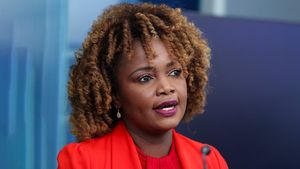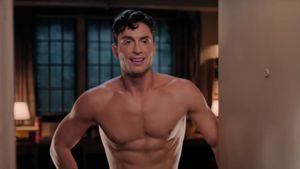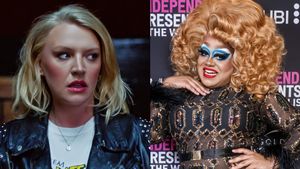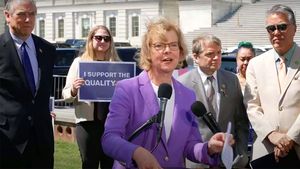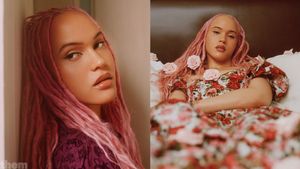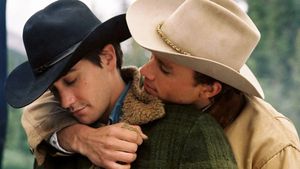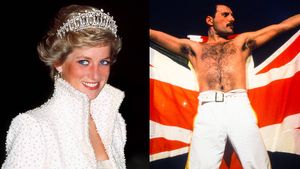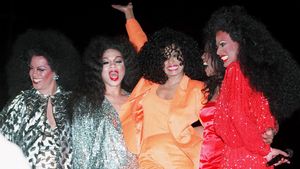In 2022, I received a diagnosis for autism at the age of 31. A few months later, Netflix released Dead End: Paranormal Park, the adaptation of my DeadEndia webcomics which I show ran through the pandemic. The DeadEndia series focuses on a group of teens working in a theme park housing an elevator to the demon world. Much of the press before the show’s release spotlighted Barney (played by Zach Barack) who is possibly the first trans lead character in an animated kids series. But since the show’s release, there’s been just as much attention paid to his co-lead Norma (played by Kody Kavitha).
The DeadEndia webcomic began in 2014. While Barney was intended to be big, loud, and funny, Norma was conceived to be #relatable. Webcomics live and die based on their shareability, and if readers can easily spot a joke taken straight from their lives, they’re more likely to retweet, reblog and repost. Norma was neurotic, pedantic, and anxious but also brave, loyal, and principled. She was my attempt at writing the average teen. But as time went on, readers kept asking me variations on the same question - “Is Norma on the spectrum?” / “Did you mean to write Norma as having ASD?” / “Can I headcanon Norma as autistic?”
In truth, this was all accidental. Everything Norma was going through was taken from my own experiences. I find people hard to read; I have meltdowns when my schedule is changed, struggle in social gatherings and I am never happier than when being left alone to my hobbies. I have an encyclopedic knowledge of a few “useless” topics (Godzilla, Pokemon, Horror movies - basically anything involving monsters) but I was always falling behind in class. From about 8 or 9, I took extra English lessons because I was diagnosed with dyslexia. And then I was undiagnosed. Then re-diagnosed. I kept fooling the tests. I had low reading ability when faced with a book, and yet my vocabulary was vast–from reading endless Godzilla fan sites, playing text-heavy RPG video games, and spending all my time writing stories of my own. I had the vibes of an overachiever but hated school. I often entertained myself by playing in a world of my imagination - and I’m not talking about when I was 6, I mean when I was 16, 17, 18 and I remember googling “Is there a disease that means you have the brain of a child” and found forums of similar concerned loners but no conclusive answers.
Because of the fan reaction to Norma, when it came to writing the Netflix adaptation, we hired an autism consultant - Michelle Dean. She came in to read our scripts and check we’d been handling the representation while. After reading the first few, she came back to me saying “Wow, you must have done a LOT of research”... I guess I had. 31 years of it. It was the writing of the tv show which led me to seek an official diagnosis.
It was during this process that I kept wondering why nobody spotted all of this sooner, including myself. But I think the reason I passed had nothing to do with autism. It was because I was also gay.
So much of my childhood was defined by trying to make sure nobody suspected I was queer. Was I walking too fruitily? Did I just put my hand on my hip too sassily? Did I just say something with a lisp? It didn’t help that the playground was rife with “gaydar” pranks. You know, the sort where you’re told “There’s something on the bottom of your shoe!” and apparently to look by peering over one’s shoulder is scientific proof you are attracted to the same gender. “That’s gay,” was the defining insult of my teens, and I wanted to be anything but.

Courtesy of Netflix
And so I mirrored the behavior of everyone around me. I had a desperate need to be seen and a constant wish to be ignored. I wanted the spotlight as a way of blending in. And as a result, I look back at that little boy and I don’t know if he was mirroring behavior to appear straight or just neurotypical.
So, how was I supposed to write a “relatable” teen if that was my experience? I had assumed everyone went through the same thing but quickly found out that was not the case. But some had. I was not alone.
Norma speaks to queer, autistic kids like me, but also any teen who ever felt like they’re navigating a world that wasn’t made for them. It’s why the characters in DeadEndia relate so much to the demons they encounter. They too have been “demonized” in one way or another.

Courtesy of Netflix
In DeadEndia, Norma wrestles with her attraction to the same gender while not having the social skills to know how to tell her best friend she has a crush on her. This is taken directly from an experience in my life. And, just like my life, while there’s many hurdles and embarrassing moments along the road, there is ultimately a happy ending.
The first line of DeadEndia is “Come all ye lost souls, the living and the dead” and it’s the ultimate purpose of this comic. I want this series to be a beacon to the weirdos, the kids who feel alone. DeadEndia is a way of telling them they’re not alone.

Courtesy of Netflix
The definitive editions ofDeadEndia: The Watcher’s TestandDeadEndia: The Broken Halo (volumes 1 and 2 respectively) are published by Union Square & Co and are available now. A third and final book, DeadEndia: The Divine Order, will be released in 2024.
Dead End: Paranormal Park, seasons 1 and 2, is also available on Netflix.


















































